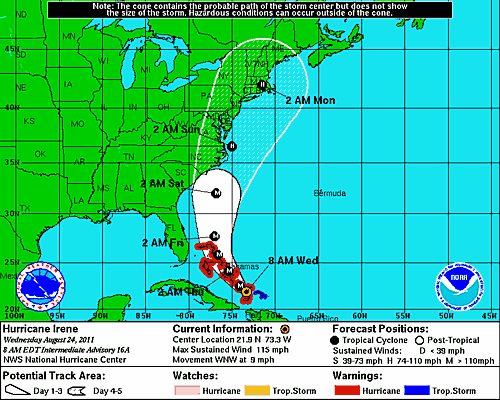I'm thinking about the Bahamas alot today — remembering all the beautiful places we visited and trying to imagine them in the midst of a Category 3 hurricane.

Most cruisers left the Bahamas a long time ago. The ones that didn't go back to the US are probably now farther south in places like Grenada, Trinidad, or Panama where hurricanes (statistically) don't go.
Some swear the summer is the best time to cruise the Bahamas. Calmer breeze, warmer water, fewer people. I've heard they have some bugs, though. Nonetheless, I had been intrigued by the prospect and half-considered a trip to the Bahamas earlier this summer. Now I'm horrified that the thought even crossed my mind.
It isn't that the Bahamas are so much more likely to get hit by a hurricane than a random spot on the US coast (okay, maybe a little bit more likely), but the preparation and evacuation experiences would be completely different. The US has stores for buying supplies. Boats can be secured up rivers and deep into mangroves, or hauled out at a marina. You can get off the boat and into a car (or a plane) and leave. And if the boat ends up on a beach (or a house), there are cranes and equipment to help get it off and boatyards to repair it. None of these are really available in the Bahamas, or to a lesser extent the rest of the Caribbean.
Of course the US will have about a million people trying to do the same thing, and pulling the boat off a beach is not something you ever want to do. So preparation and avoidance are key.
On the preparation end, Take Two carries all the gear we think we'd need to secure her for any storm she has a chance of surviving. Our hurricane plan calls for five anchors, lots of chain, lots of heavy shackles, ratchet straps, chafe gear, and air tanks. We've got it all, but deploying it would still be a hell of a job.
Wherever we are, we're always thinking about where we would go for all-around storm protection. From north to south my list of holes in the Bahamas is Black Sound, Treasure Island, Little Harbour, Royal Island, Norman's Pond, and the Redshanks anchorage in Elizabeth Harbour. No guarantees with any of those, of course. Little Harbour looks dicey from a surge standpoint, and I've heard that Royal Island has failed to provide protection in prior storms.
Avoidance is better. We already endeavor to avoid Florida winters. I think we'll add hurricane season to that list as well.
